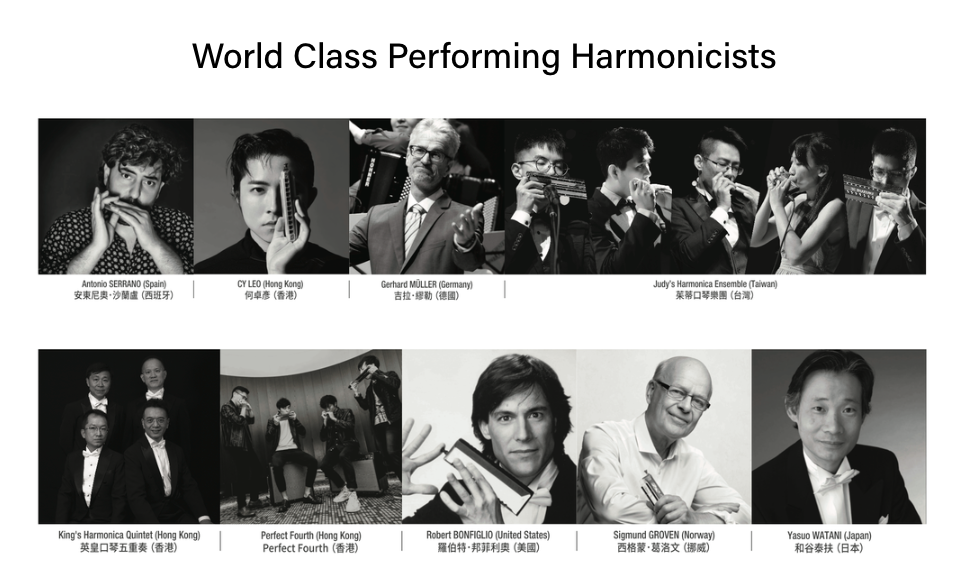On Harmonica's Malleability
Sometimes creating tension, sometimes expressing melancholy, listening to a harmonica is like gazing at a gorgeous world through the small holes of a kaleidoscope.

[This feature article commissioned by the Hong Kong Harmonica Association for its 1st Hong Kong International Chromatic Harmonica Competition and Concerts is a part of the master concert's programme notes.]
Not only is the term malleability used in metalwork as a measure of how metal can be remoulded, but it is also fitting to describe the very aspects - melody, musicality, musicianship, and more - of a shining chromatic harmonica, which is typically made of metal. Sometimes creating tension, sometimes expressing melancholy, listening to such a tiny instrument is like gazing at a gorgeous world through the small holes of a kaleidoscope.
This master concert, the culmination of rigorous adjudication during The First Hong Kong International Chromatic Harmonica Competition, features a panel of judges who are all among the most prominent harmonica players in the world. From Germany, the origin of the harmonica, to Hong Kong, a cosmopolitan city where the competition takes place, the art of harmonica performance has undergone a glorious evolution over centuries, producing ingenious compositions and performances that have transcended national boundaries. The programme for this evening creates a rich tapestry of harmonica music that captivates the audience. The maestros in the first half of the concert are all trailblazers in the field, followed by a second half taken over by new generations who often think outside the box of classical music.
But the concert is not just about celebrating the past and present of harmonica music. As French philosopher and Nobel laureate in Literature Henri Bergson famously posited, time is a nonlinear measurement. The best example of this abstract statement is embodied by the very first excerpt of the concert, "No More Country More Beautiful Than This Time". With this masterpiece published by Zuccalmaglio, the grandiose words of the nineteenth century still resonate today and are even played on a chromatic harmonica across the ocean. Although harmonica music has circulated from Germany around the globe, its evolution over time is nonlinear, parallel, and diverse.
The process is particularly unique in Hong Kong. The founding of the King's Harmonica Quintet has revealed to the world that classical music is infinitely malleable, and this instrument can also be used in the form of chamber music. Furthermore, in the city, harmonica bands have flourished, as a longstanding category in the Hong Kong Schools Music Festival. Students from all schools strive for this annual event. The harmonica is not an uncommon major instrument in the music departments of the city's universities. We are also delighted to see a new generation of harmonica ensembles, each with its own clear identity and distinctive style, giving viewers on the international stage a glimpse of the vitality and charm that this Pearl of the Orient represents.
This is a multimedia storytelling production that treats the audience to an evocative audio-visual experience that brings the music to life, immersing them in the world of harmonica music. Certainly, the narrative arc of incorporating transitional videos — animation and other visual effects — is also non-documentary and nonlinear. However, everyone can feel the malleability of harmonica music and its ability to transcend geographical and cultural boundaries in this master concert.
